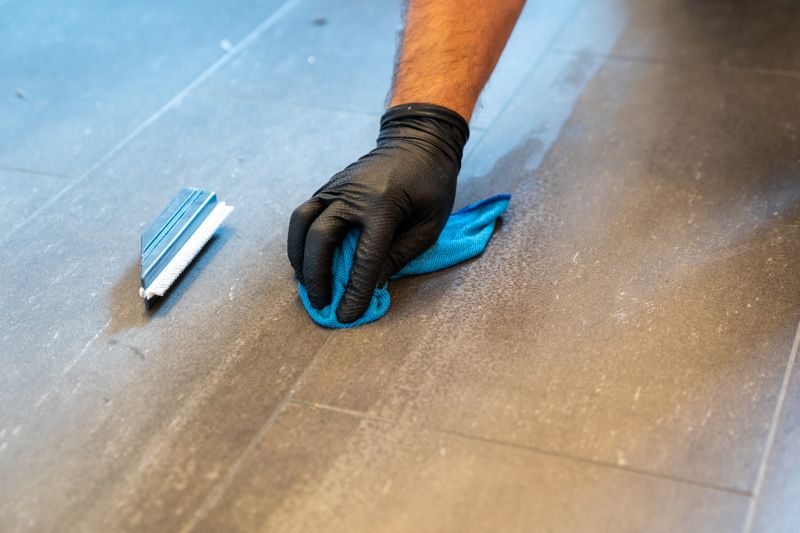Top Waterproofing Products To Protect Your Home and Foundation
Explore the leading waterproofing solutions designed to prevent leaks, moisture damage, and ensure long-lasting protection.
 Waterproofing products play a crucial role in protecting structures from moisture intrusion, which can lead to damage, mold growth, and structural deterioration. Whether applied to foundations, roofs, basements, or interior surfaces, choosing the right waterproofing solutions requires understanding the various types and their specific applications. Proper selection and application can help maintain the integrity of buildings and prolong their lifespan.
Waterproofing products play a crucial role in protecting structures from moisture intrusion, which can lead to damage, mold growth, and structural deterioration. Whether applied to foundations, roofs, basements, or interior surfaces, choosing the right waterproofing solutions requires understanding the various types and their specific applications. Proper selection and application can help maintain the integrity of buildings and prolong their lifespan.
Top Overall Option
Liquid Waterproofing Membrane
A versatile liquid membrane offers a seamless, flexible barrier that can be applied to various surfaces including roofs, foundations, and decks. Its ease of application and ability to conform to complex shapes make it a popular choice for many waterproofing projects. When properly applied, it provides a durable layer that resists cracking and water infiltration, helping to protect structures over time.
Types of Products For Waterproofings
Liquid Waterproofing Membranes
Fluid coatings that create a seamless barrier on surfaces, suitable for roofs, basements, and decks.
Bituminous Coatings
Asphalt-based coatings that provide durable waterproofing for foundations and roofs.
Polyurethane Sealants
Flexible sealants ideal for joints, cracks, and seams needing waterproof protection.
Cementitious Waterproofing
Waterproof coatings made from cement compounds, often used in basements and tunnels.
Rubberized Coatings
Elastomeric coatings that stretch and move with surfaces, suitable for roofs and decks.
Sheet Membranes
Pre-formed waterproof sheets that are applied to surfaces for reliable moisture barriers.
Bitumen Sheets
Self-adhesive or torch-applied sheets used primarily for roofing and foundation waterproofing.
Acrylic Waterproof Coatings
Water-based coatings suitable for walls and exterior surfaces requiring waterproofing.
Hydrophobic Paints
Specialized paints that repel water and are used on exterior walls and surfaces.
Vapor Barriers
Materials designed to prevent moisture vapor transmission, often installed in walls and floors.
Waterproofing Tapes
Adhesive tapes used to seal joints, cracks, and seams in various surfaces.
Crack Fillers and Sealants
Products formulated to fill and seal cracks, preventing water ingress.
Waterproofing Plasters
Thick coatings that form a waterproof layer on masonry and concrete surfaces.
Foundation Waterproofing Paints
Specialized paints designed to create a waterproof barrier on foundation walls.
Spray-On Waterproofing Coatings
Sprayable products that provide quick and uniform waterproof coverage on large surfaces.
Popular Choices
Widely used for their seamless application and adaptability across various surfaces.
Commonly selected for their durability in foundation and roof applications.
Favored for sealing joints and cracks due to their flexibility and strong adhesion.
Popular for foundation waterproofing and roofing projects where reliable moisture barriers are needed.
Chosen for their elastomeric properties, especially on rooftops and decks.
Commonly used for exterior wall protection to repel water and prevent seepage.
Essential for maintaining the integrity of existing structures by sealing potential water entry points.
Popular for quick sealing of joints and seams in various construction applications.
Often selected for basement and tunnel applications due to its strong adhesion and durability.
Frequently used in wall and floor assemblies to control moisture vapor transmission.
Popular for exterior wall surfaces requiring a water-resistant finish.
In Ashland, OH, where seasonal weather fluctuations are common, effective waterproofing is especially important for homes and commercial properties. From liquid membranes to sealants and membranes, there are numerous options available to suit different needs and budgets. It's essential to evaluate the conditions of the area to be protected, including exposure to water, soil type, and existing structural issues.
Applying waterproofing products correctly can prevent water penetration and reduce long-term maintenance costs. Many products are designed for easy application, whether through brushing, rolling, or spraying, making them accessible for DIY projects or professional installation. Regular inspection and maintenance of waterproofing barriers ensure ongoing protection against moisture ingress.
Selecting the right waterproofing product involves considering factors such as durability, flexibility, compatibility with existing surfaces, and ease of use. By understanding these aspects, property owners in Ashland can make informed decisions to safeguard their investments against water-related problems.
Key Buying Considerations
- Determine the specific area and surface to be waterproofed to select the most appropriate product type.
- Consider the exposure level to water and moisture — high-exposure areas may require more durable solutions.
- Assess the flexibility of the product to accommodate surface movement and prevent cracking.
- Check compatibility with existing materials and surfaces to ensure proper adhesion and performance.
- Evaluate ease of application, especially if considering DIY installation; some products require specialized tools or techniques.
- Review the drying and curing times to plan application schedules effectively.
- Consider the longevity and expected lifespan of the waterproofing solution for long-term protection.
- Look into the product’s resistance to UV rays, temperature fluctuations, and other environmental factors relevant to your location.
- Ensure the product is suitable for the specific application, such as foundation, roof, or interior surfaces.
- Verify the safety and handling instructions, particularly if working in enclosed or inhabited spaces.
- Assess the need for multiple coats or layers to achieve optimal waterproofing performance.
- Review warranty or guarantee options offered by the manufacturer for added peace of mind.
- Consider budget constraints while balancing the quality and durability requirements.
- Consult local building codes and regulations to ensure compliance with waterproofing standards.
- Seek professional advice if unsure about the best product or application method for your project.
This page contains affiliate links. We may earn a commission if you make a purchase through these links, at no additional cost to you.
